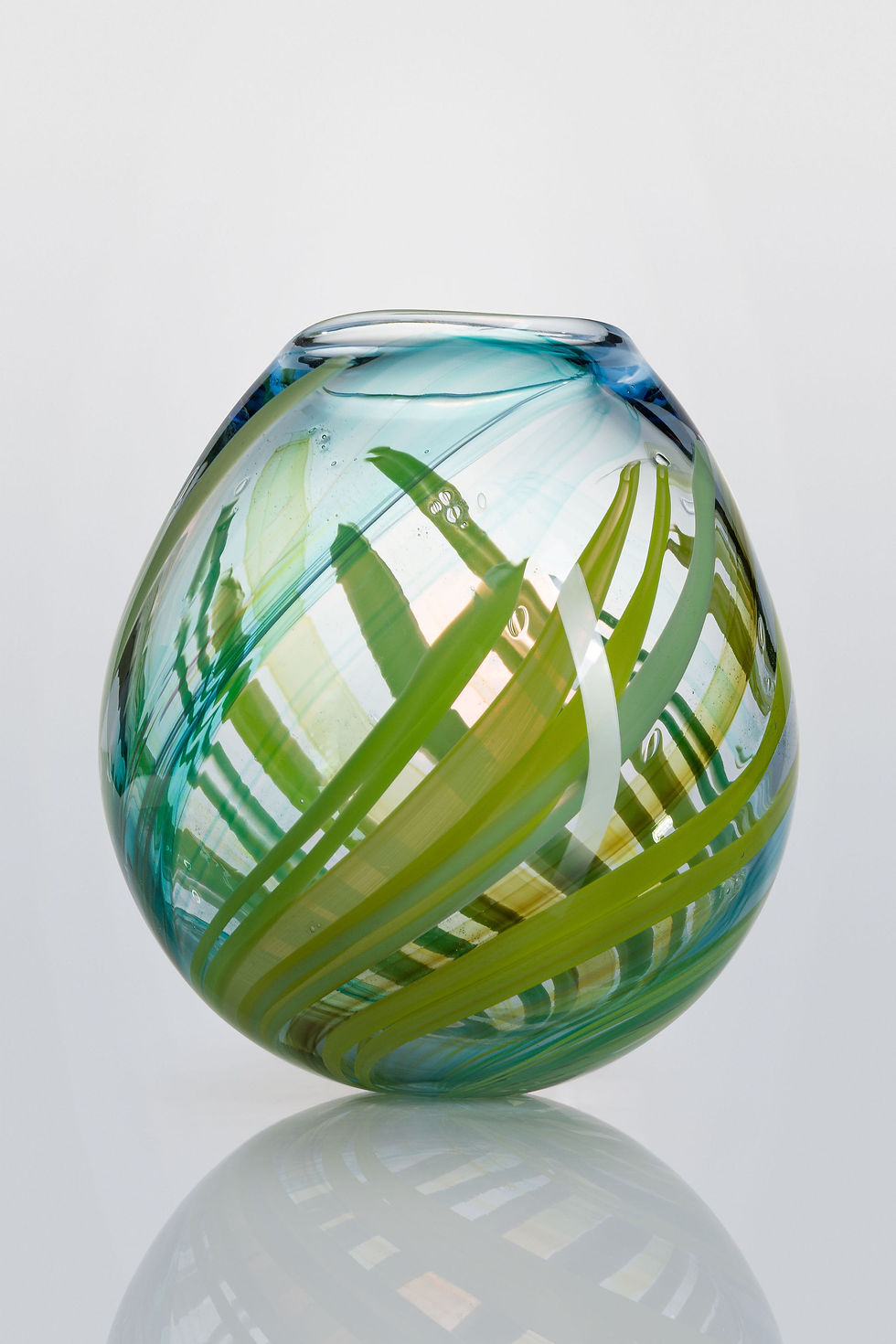Episode 2: Down to Zero (and beyond) – me and climate change
- Roberta Mason

- Aug 13, 2021
- 4 min read
Updated: Jan 9
My journey to a net zero carbon and hopefully carbon positive life (and art practice)
And so it begins
"The journey of a thousand miles begins with one step" Lao-tzu

I’ll be honest; it has taken me a while to get to a point of focused, conscious action. I have done bits like selecting a green electricity tariff, offsetting my flights and considering food miles but it was while studying for my MA in glass that I really started to think about it. I have been mesmerised by glass most of my life and while I was fusing or casting, I contemplated the amount of energy required to create the jewel-like coloured sheets and billets of glass I used in my work as well as the work itself. I conscientiously saved all my scrap and made use of it or gave it to other glass artists for recycling – but it still niggled me.
Some glassmakers are really successful in their recycling and drive toward sustainability. Hannah Gibson is a wonderful example of this with her innovative approach to recycling. Have a listen to her Glass Art Society IGTV talk which explains her work:

My MA gave me an opportunity to explore other kinds of glassmaking, when I (sound the trumpets!!) discovered my true love - hot glass/glass blowing.
Words cannot describe how it feels; the elemental forces, the glowing molten material – alive with possibility, charged with energy and shaped by temperature and a guiding hand -Idea to reality in perfect harmony with the material and teamwork of the highest order. I became completely obsessed with hot glass. It’s a passion and the perfect means of expression for my work yet fraught with carbon implications.

I became totally torn about how to balance my art practice and life in the face of climate change, so much so, that I thought about giving up glass. I considered other materials, but all had similar issues and didn’t fit with my work. It turns out that glass is so much a part of me that I needed to find a way forward so with a bit of thought and doing my sums, I opted for focused making sessions with an aim to make work more sustainably and look at other areas of my life I could change to essentially ‘offset’ my work (at least partially).
A plan (‘a cunning plan’ for those lovers of Blackadder) seemed to be forming, however amorphously, in my mind.
Whilst doing the research for a new project about trees and looking for glass blowers/glassmakers happy to work with other artists, I contacted master glassmaker, Neil Wilkin. It turns out that Neil lives on a smallholding in Wales, has been planting trees his whole life and has been working toward having a net zero carbon practice. He makes amazing nature inspired work as well as having great ideas/plans for building a sustainable art practice.

This was amazing! He has so much knowledge and insight and this really gave me hope that my dream of a sustainable life and net carbon zero hot glass practice is achievable.
For me, my life and my work are inextricably linked so It became clear that I needed to make some lifestyle changes to start making a difference. Change always seems to be easier when we share that process and experience with others. This is an adventure which has just begun and a destination that will be worth the learning and effort to achieve.
Ok, so now I have decided that this is the path for me, what next? Where do I start?
Like all good science experiments, we need a baseline measure, a plan to reduce our carbon impact and regular measurements to show the effectiveness of the changes we make. A baseline measure is essential to get the ‘you are here’ view.
A bit of research led me to a few very helpful articles and tools:
This is an easy and fun questionnaire to help get a baseline. It asks good questions, gives you a score compared to the British national average as well as world, then gives you a report with hints and tips on how to improve. It’s basic and can feel like the responses are a bit generic but it's a really helpful place to start.
How to reduce your carbon footprint by Livia Albeck-Ripka, New York Times This is an American article and much of the info and calculations are based on the American lifestyle but it provides a great checklist on where to begin. Most calculators are country dependent, because where you live has a base footprint, think of it like the skeleton, all the infrastructure we use in our society. The calculator they provide is US only.
The practical ways to reduce your carbon footprint (that actually work) by Laurie Clarke,
Wired Magazine
This article provides good practical advice and an idea of why we should make certain choices. It goes some way to clarifying the elements within the decisions we can make and is helpful in understanding how to make better, more informed choices.
They provide a link to another calculator for individuals, small or large businesses and by product. This is provided by www.carbonfootprint.com.
Next time I will go through my process and thoughts on a more detailed baseline with respect to my art practice and life.







Comments